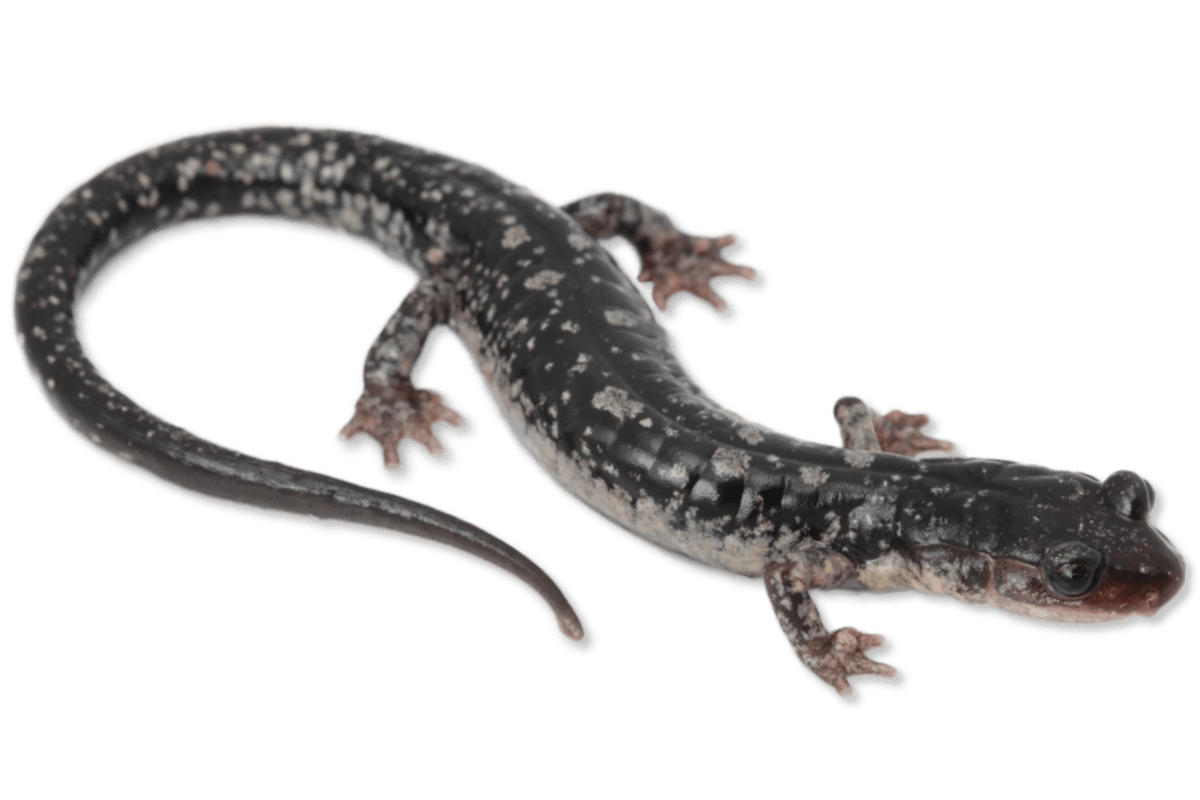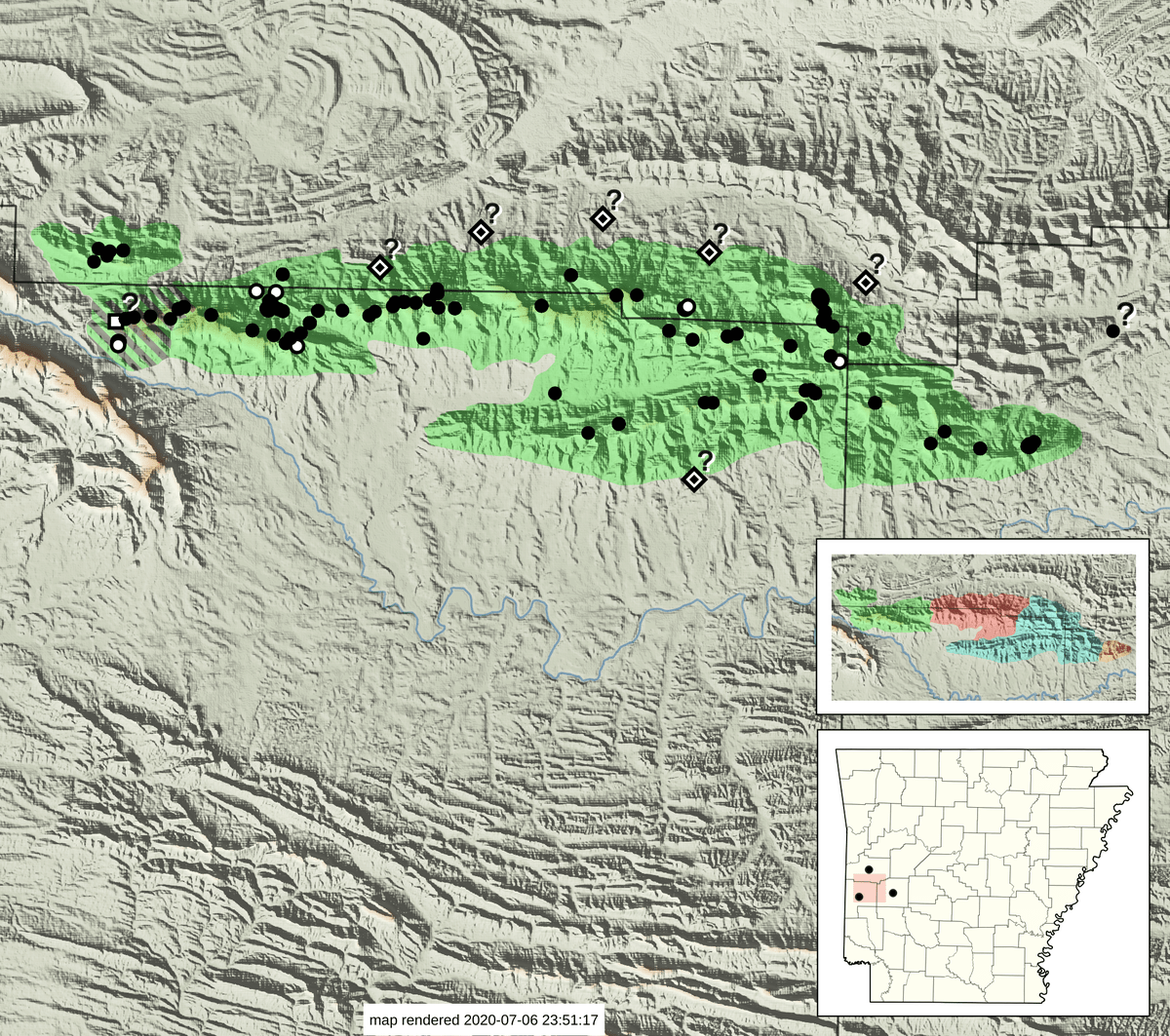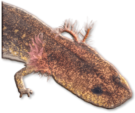
Rare and endemic to AR: known only from Fourche and Iron Forks mountain ranges in Montgomery, Polk, and Scott counties. Larger, stockier build than similiar-looking mountain and slimy salamanders. Color black with two rows of large, lichen-like blotches and scattered smaller specks. Chin pale. Belly dark with a few white specks. ![]()

Species of Greatest Conservation Need
Arkansas Herpetological Atlas 2019
This species is represented by 574 records from 23 sources: 547 museum ( ), 1 literature (
), 1 literature ( ), 0 research (
), 0 research ( ), and 20 observation (
), and 20 observation ( ), with 6 additional Trauth et al. (2004) locality points remaining unsourced (
), with 6 additional Trauth et al. (2004) locality points remaining unsourced ( ). It has been museum vouchered for 3 of 75 counties (
). It has been museum vouchered for 3 of 75 counties ( ). Years of collection range from 1961 to 2017.
). Years of collection range from 1961 to 2017.
This species inhabits the Fourche and Iron Forks mountain subranges within the greater Ouachita Mountains. Shepard and Burbrink (2009) identified four well-supported, geographically structured lineages (inset): Blue Mountain (■), Buck Knob (■), Little Brushy (■), and Western Fourche (■). However, these have not been proposed for species status. Trauth et al. (2004) plotted some questionable localities from lower elevations which remain unsourced. A questionable record from the eastern end of Brushy Creek Mountain, Montgomery County (ASUMZ 27902 from 2003), warrants confirmation. This species is known to hybridize with P. ouachitae (■) on the western end of Fourche Mountain (Shepard et al., 2011).










































